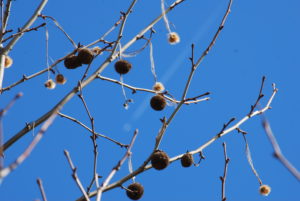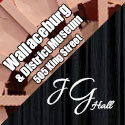By Larry Cornelis – President, Sydenham Field Naturalists
Learning to identify trees is a fun and interesting activity (in my opinion).
The bonus is that it is time spent outdoors, some nature therapy.
More about that in a future article.

To learn tree identification, you can take a Dendrology course (the scientific study of trees), but getting a few good books and spending some time in the woods with trees is a great way to learn about them and understand them – to know who they are, how they grow, where they grow and what species they associate with, both flora and fauna.
We can listen to trees through observation and I believe they have something to share.
After all, we all have a relationship with trees.
They provide us with much needed shade and beauty, oxygen, they control climate, address climate change through carbon sequestration and support many of natures creatures that enrich our lives.
Winter is a good time of year to identify trees.
For some species, it is the best season because you can get a good look at twigs and buds without the leaves obstructing your view and the buds are fully developed.
Identifying trees is about knowing what to look for.
Identifying features such as buds, twigs, bark, leaves and flowers are your clues as to the species (of course there are no leaves or flowers in winter).
Although sometimes all you need is one feature.
The seed pod of a Kentucky Coffee Tree is a diagnostic feature.
Nothing else growing locally has a seed pod like that.
The smooth bark of an American Beech is diagnostic.
But sometimes you need a few features to identify to species.
Are the twigs and buds opposite each other or are they alternate?

Are the buds rounded or very pointed?
Are they hairy, smooth or maybe sticky?
Are they covered in scales or naked?
And what shape are the leaf scars of last years leaves?
The bark can also be used to identify a tree.
Is it smooth or course, scaly or ridged, and what colour is it inside?
Then there’s form and structure.
The general shape of the tree and the design/growth pattern of the twigs and branches.
This can be much easier to see in the winter.
It’s a great way to identify trees from a distance.
Don’t be intimidated by all these features.
You usually only need one or two to identify a tree.
And we only have about 70 native species to learn.
Of course, you’ll need a few good books to learn what to look for (see list below).
Another great way is to learn from knowledgeable naturalists and tree aficionados.
Nature clubs and conservation groups often have field trips to look at trees and most people love to share their knowledge.
I believe knowing the names of trees (and other living things) is important.
It’s hard to understand, know or care about something if you don’t know its name.
That disconnect leads to indifference, disinterest and sometimes disrespect.

Why would you care about conserving Sycamores if you don’t know their name or about their supporting role in nature?
I encourage you to get out and meet lots of trees.
It is time well spent and healthy for you.
Happy tree hunting.
Recommended books:
Trees of Michigan, by Barnes and Wagner
Trees of the Carolinian Forest, by Gerry Waldron
The Sibley Guide to Trees, by David Allen Sibley
For more information, visit: http://www.sydenhamfieldnaturalists.ca/















